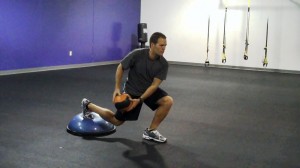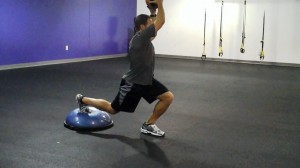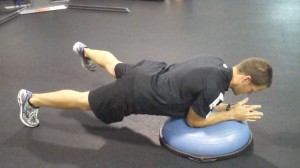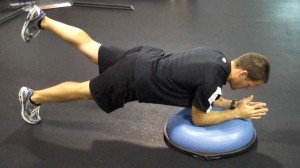Brian Schiff’s Blog
Injury Prevention, Sports Rehab & Performance Training Expert
I was asked to comment on a thought provoking blog post on MyPhyscialTherapySpace.com. There is ongoing discussion with respect to the exact role a therapist should play in the continuum of care for patients. I enjoyed reading the posts on there and I have posted my reply on my blog for you to see (not to mention the fact the blog site would not let me post my entire repsonse in a single comment). To read the original post click the link below:
Now my comments…….
I would say as a cash based practitioner currently living in the sports performance and post-rehab fitness realm (I own a fitness training facility), I would say that many of my therapy colleagues do not truly understand how to push and/or fully rehabilitate people to a high enough level that meets the pre-injury functional capacity.
I often see referrals that have already failed traditional rehab or are getting inadequate therapy. Why? In many cases, PT’s are following basic protocols, not supervising exercise progression closely enough, moving too slowly or in some cases (ACL rehab) moving too fast. I also find clinicians are often hesitant or perhaps unwilling to change treatment progressions within the sessions, reps or sets even if the client’s response to the stimulus indicates such a change.
The longer I work with clients, the more hip issues I see. Generally speaking, I find the major issues to be related to decreased mobility, poor stability and muscle imbalances. These may occur in isolation or combination.
It is a no-brainer that most people have tight hip flexors and external rotators given all the sitting that takes place in our computer age. This inherently creates weakness and tightness. I feel that a natural propensity to be positioned in hip external rotation may actually reduce the firing of these muscles which in turn allows for more valgus moments at the knee and reduces lower limb stability.
Typically, female athletes fail to adequately fire the gluteus maximus (hip extension and external rotation) and prefer to dominate movement with the quads. So, how do we begin to change this?
Well, first we must focus on better hip mobility. I believe we must work to gain better hip extension by stretching the hip flexor group. I also believe we need to do this dynamically and not just passively. A dynamic approach also allows us to improve knee stability on the opposite side as we work on hip mobility. It will also allow us to resist internal rotation of the femur and the valgus moment at the forward knee.
Look at the images below:


I am demonstrating a BOSU split squat diagonal chop. This is the first of a series of BOSU exercises I am doing for PFP Magazine. The upward chop forces hip extension on the right side and the downward motion reinforces firing of the left glutes to reduce internal rotation and valgus. What a perfect combo right?
To read more about this exercise, click here.
Now, you should start on the floor with just the arms and progress from there. This is a great prehab exercise or warm-up activity, but it cna also be used for strengthening too. I hope you find it as beneficial in your routine as I do.
So, I read a very interesting article yesterday in the local paper here, The Columbus Dispatch. The title was “Children May Be Vulnerable in $5 Billion Youth-Sports Industry.”
I have a vested interest in this discussion for two reasons:
- I profit directly from youth sports training in my business
- My two boys participate in youth sports
Consider some stats from this article:
- Youth sports has more than 6x the athletes than high schools
- 99% of high school coaches have also coached a youth team
- 90% of HS athletes played youth sports
- 50% began playing between 6 and 9
- 31% of athletes paid more then $1500/year to play
- 26% of those hurt while playing youth sports said their injury affected their ability to play any sports
- 20% say their parents pressured them to play youth sports
Perhaps the final bullet point may be the most disturbing, right? Who wants pressured? Well, we all know parents want the best for their kids, or so they should. Sometimes, they simply push too hard as they may want their child to get an elusive scholarship, or perhaps they are trying to live vicariously through the child.
While I am a firm believer in giving kids every opportunity to excel, there needs to be a healthy balance and perspective too. Kids at age 5 don’t need to be doing sport specific training. I don’t think elementary age kids need to be playing tackle football either. Why not work on coordination, cutting safely and general movement skills? The biggest thing I hate to see is specialization at an early age.
Kids should play multiple sports and work on multilateral sport development and not unilateral sports that often lead to overuse and premature injuries. Specializing in a sport is something to be considered during the high school years and beyond.
Back to the article. Consider this: one woman spent $30,000 to send her teenage son to IMG in Florida to train 6 days per week for 6 months. Another parent would drive through the night back to the Pittsburgh from Florida so his son could pitch on an elite team there on the weekend and be back in time for school for 3 straight months in the winter. Is this crazy or what?
I do not want to sound too judgmental, but at what emotional, psychological and physical cost do we draw the line? One 11 year old club soccer player gave the sport up because her coach screamed at her so much. Now she runs. Seriously? Coaches are driving youth athletes away and toward burnout daily due to elitism and ultra competitive coaching tactics/behaviors.
Perhaps we should be ashamed of ourselves? I try hard not to be a part of this. I will openly turn away sessions if I feel the athlete has too much other stuff going on. I did this just the other day as one mother called and said her son was playing soccer and running cross country. She mentioned he had some mild knee soreness. I know why.
I told her training with us was not a good option right now and that he should come back in the winter when he was not playing a sport. After talking, she thought this made perfect sense. She was not a pushy parent and truly understood that more is often not really better (refreshing).
One of my own athletes who has worked with me since age 10 recently had to give up the sport of soccer. She suffered multiple concussions, and now at age 16 is dealing with recurrent memory issues, medications and altered mood states. Wow! Is that the norm? No, but we must consider she plays soccer year-round and has since an early age. Her situation is not one in which the parents or coaches share any blame. The concussions are just an unfortunate risk in soccer.
However, as athletes play more competitively at younger ages, we may very well see more injuries and a higher severity as well since the exposure risk increases. It is certainly worth looking at in the years to come. Is all the training, extra practice and grueling competition really detrimental long term? It may be hard to say for sure, but if you coach, train athletes or are a parent, I beg you to consider the overall maturation and life cycle of your children as it relates ot sport.
Let them have fun and choose what they want to do. Let them be free to play and don’t look down on them if they walk away from your sport or chosen activity. Don’t be in a hurry to make them the next best (fill in the blank). Let’s all work together to make youth sports fun, safe and enjoyable again.
Oh yeah, and let’s make sportsmanship a priority again. One referee in the article was quoted as saying, “The parents are ruder. They don’t care about sportsmanship or if they are hurting a kid. They just argue.” While coaching my son in flag football this past Spring, one parent on an opposing team was trash talking. I mean really inappropriate stuff too. I never agree with this kind of behavior, but I think that at ages 4 and 5 it is utterly ridiculous. I will save that rant for another day. LOL
In the meantime, stand with me and be protectors of our youth athletes by using sound judgment, staying current on research, and listening to our kids as they grow.
Over the years, I have worked with hundreds of athletes (male and female). One consistent finding among many I see is weakness in the hips and core. Knee injuries are often the result of poor frontal and transverse plane stability, which is often related to weakness in the glutes (max and medius).
In order to resist valgus/rotational loads effectively, athletes must address this weakness with training. I am always looking for ways to get the most out of exercise provided it makes sense to me. So, I began using the exercise I am sharing with you today – BOSU planks with hip abduction/extension. I use both to work on the gluteus maximus and medius muscles. This exercise targets hip and core weakenss at the same time.

Hip Abduction

Hip Extension
Click here read how to execute the exercise and apply it to your routines.
It is no secret that the average male gym goer loves to do plenty of bench press exercises. I was out at a piano bar last weekend celebrating the 10 year wedding anniversary of some close friends and witnessed the “bar body” syndrome firsthand.
For those not familiar with this lingo, the “bar body” belongs to the guy who overworks the chest and biceps, while typically neglecting the back leg muscles altogether. They routinely sport tight t-shirts and jeans even in the dead of summer in Ohio.
I spotted the bouncer right away. He was likely 25 years old and obviously proud of his caveman posture and large stature. What he does not know is that in 5-15 more years he will likely suffer significant shoulder impingement and AC joint arthritis, not to mention he will have little to no upper body flexibility.

Know anyone that fits this description? Look around in your local health club and you will surely find them. So, the takeaway messages are:
- Perform back to chest strengthening exercises in a ratio of 3:2 or even 2:1 to promote balance and better posture
- You do not need to bench press all the time (once per week is sufficient and may even be too much for some)
- You should do routine flexibility exercises for the chest as these muscles are tight in most of the population and they can contribute to increased internal rotation of the shoulders and rotator cuff problems
In light of this, I want to share a few effective exercises from my brand new Training & Sports Medicine Update Newsletter. To view these exercises, click HERE.
If you enjoyed this information, you can get even more info on exercise, recent research, sports performance training, injury prevention and rehab delivered to your inbox monthly by signing up for a subscription to my newsletter. You can grab the digital version for just $9.95/month. By subscribing, you are become eligible for immediate product discounts and promotional pricing on all new items.
Click here to sign up and get the entire first issue today!
In health,
Brian

